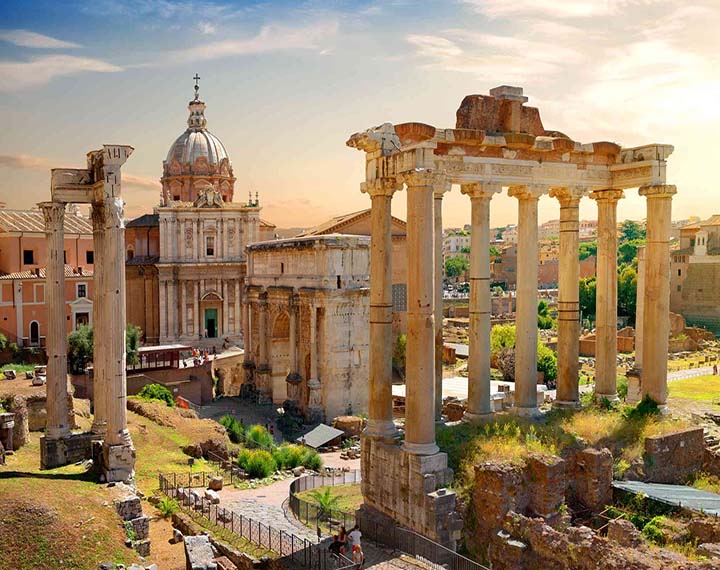
Roman Forum
Vast excavated area of Roman temples, squares & government buildings, some dating back 2,000 years.A must see an iconic part of roman history. At the end of the Republican period, when Rome had become the capital of a vast empire that stretched from Gaul to Asia Minor, the ancient Roman Forum became insufficient for the administrative functions and monumental center of the city. Julius Caesar in 54BC first to the creation of a new square, considered at the beginning as a simple extension of the Republican Forum.
The Roman Forum stands as a remarkable testament to the grandeur and complexity of ancient Roman civilization. It is a UNESCO World Heritage Site and a captivating destination for those interested in history and archaeology.
The Roman Forum, often referred to as the Forum Romanum in Latin, is a rectangular plaza surrounded by the ruins of several important ancient government buildings at the center of Rome, Italy. Here are key details about the Roman Forum:
- Historical Significance: The Roman Forum was the central hub of ancient Rome and served as the focal point for civic, religious, and commercial activities. It was the political, social, and economic heart of the city.
- Location: Situated in a valley between the Palatine and Capitoline Hills, the Roman Forum is part of a larger archaeological complex that includes numerous ancient structures.
- Structures: The forum is surrounded by the remnants of several prominent buildings and structures, including temples, basilicas, arches, and government buildings. Some notable structures include the Temple of Saturn, the Arch of Septimius Severus, the Basilica Julia, and the Curia Julia (Senate House).
- Religious Sites: Various temples dedicated to Roman gods and goddesses, such as the Temple of Vesta and the Temple of Castor and Pollux, were located in the Forum. The Vestal Virgins maintained the sacred fire in the Temple of Vesta.
- Architectural Evolution: The Roman Forum underwent significant changes and expansions over the centuries. It evolved with each successive era, reflecting the architectural styles of the Roman Kingdom, Republic, and Empire.
- Fora and Imperial Fora: The Roman Forum is often distinguished from the Imperial Fora, a series of additional forums built by emperors as extensions of the original forum. The Imperial Fora include the Forum of Caesar, the Forum of Augustus, and the Forum of Trajan.
- Triumphal Processions: The Roman Forum was the route for triumphal processions, where victorious generals would parade through the city showcasing their spoils of war. Triumphal arches, such as the Arch of Titus, were erected to commemorate these events.
- Decline: As the Roman Empire declined, the Forum fell into disrepair, and many structures were repurposed or used as quarries for building materials. By the Middle Ages, the Forum had become a pasture known as the Campo Vaccino.
- Archaeological Site: Today, the Roman Forum is an extensive archaeological site. Visitors can explore the ruins, walk along ancient roads, and imagine the bustling activities that once took place in this historic space.
- Tourist Attraction: The Roman Forum is a major tourist attraction, drawing visitors from around the world who are interested in experiencing the rich history of ancient Rome. It is often visited in conjunction with the nearby Colosseum and Palatine Hill.


